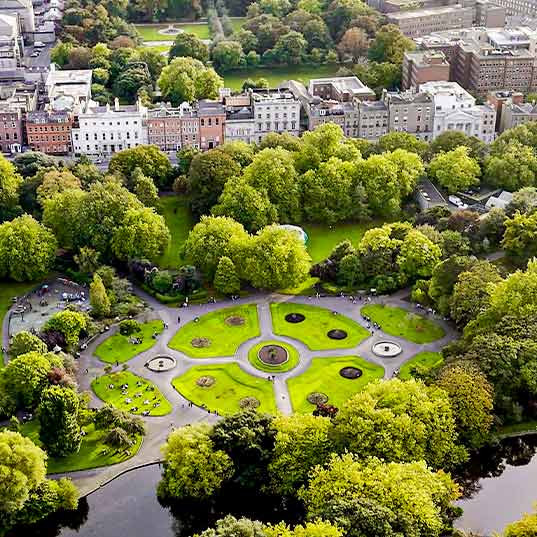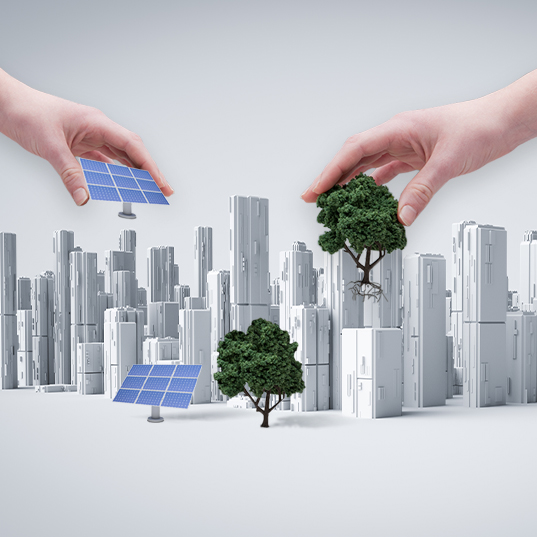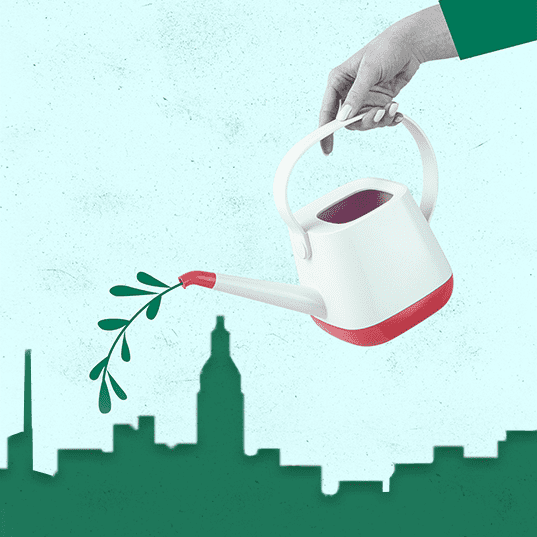How “sponge cities” act to prevent droughts and flooding
As cities experience the effects of climate change, new designs are emerging to mitigate the damage. Find out more about “sponge cities”.
Climate change is also becoming obvious in the way that water is affecting cities. Droughts, storms and flooding have become more common phenomena which can cause devastation to urban infrastructure. The response is what’s called “sponge cities”, an innovative solution for absorbing, filtering and storing surface water while setting about sanitizing it. The result? Cities that can adapt and withstand droughts and floods.
What will I learn from this article?
What is a sponge city?
In many cities, an essential factor for their design is often overlooked: water. This disconnection between urban development and water can endanger residents when torrential rain or flooding arrives.
It’s what happened in 2016 when sudden flooding unleashed on Nairobi, leaving streets submerged, trees uprooted and buildings piled up. And New York City’s experience in 2021 during tropical storm Elsa.
To achieve sustainable water management, new strategies are emerging such as the sponge city, an urban development project which permits cities to store and sanitize residual water. These cities use sustainable urban drainage systems to absorb, store and clean up rainwater.
The concept, created by landscape artist Yu Kongjian, is based on the idea that water should be managed like a sponge. How? Utilizing natural systems like plants and permeable surfaces to absorb the rainfall, avoid flooding and replenish groundwater.
How are they designed?
 For decades, cities worldwide were built around the car. A fact that has meant they are simply large extensions of asphalt and concrete, two impermeable materials totally incompatible with water. They prevent natural drainage and favor the accumulation of water, as well as increasing “heat island” effect.
For decades, cities worldwide were built around the car. A fact that has meant they are simply large extensions of asphalt and concrete, two impermeable materials totally incompatible with water. They prevent natural drainage and favor the accumulation of water, as well as increasing “heat island” effect.
Sponge cities solve this problem by incorporating green infrastructure, which permits water to filter to underground, combined with flood plains composed of earth as well as other materials such as gravel, sand and grass. As such, two mechanisms operate together: storm tanks at ground level to store water, and green zones which send the water below.
“Sponge cities solve this problem by incorporating green infrastructure, which permits water to filter to underground”
What is the aim of a sponge city?
This kind of urban development is increasingly popular as cities face the progressive stress of climate change. Cities as diverse as Shanghai, New York and Cardiff are adopting “sponginess” through urban and storm gardens, bio-retention systems, permeable paving, improved river drainage, etc. Solutions based on nature which, in one way or another, help us live with the problem.
This article talks about just that, how architecture can help us care for the environment in cities, designing buildings and spaces that bring us closer to nature.
Returning to sponge cities, they reduce the risk of flooding by absorbing excess rainwater. But they can also retain more water in rivers, vegetation and the soil instead of losing it to evaporation, meaning they are also more resistant to drought.
Such cities are overcoming a problem which town planners have always had to fight: avoiding that rainwater floods cities, while introducing ways of saving it for reuse. By utilizing natural systems to store and filter, these cities reduce pollution and improve the quality of the water. They also reduce the amount of energy needed by municipalities to treat residual water.
“Avoiding that rainwater floods cities, while introducing ways of saving it for reuse”
The development of sponge cities introduces audacious and innovative solutions to urban areas which suffer extreme climate phenomena. They can help overcome floods and prevent drought, contributing to the development of more resilient cities.
Such urban development aims to improve the relationship between cities and nature, making more sustainable use of resources and helping mitigate the effects of climate change.
Sources:
- https://elpais.com/clima-y-medio-ambiente/2022-02-22/las-ciudades-esponja-la-propuesta-china-para-adaptarse-al-cambio-climatico.html
- https://www.sostenibilidad.com/construccion-y-urbanismo/ciudades-comunidades-sostenibles/







